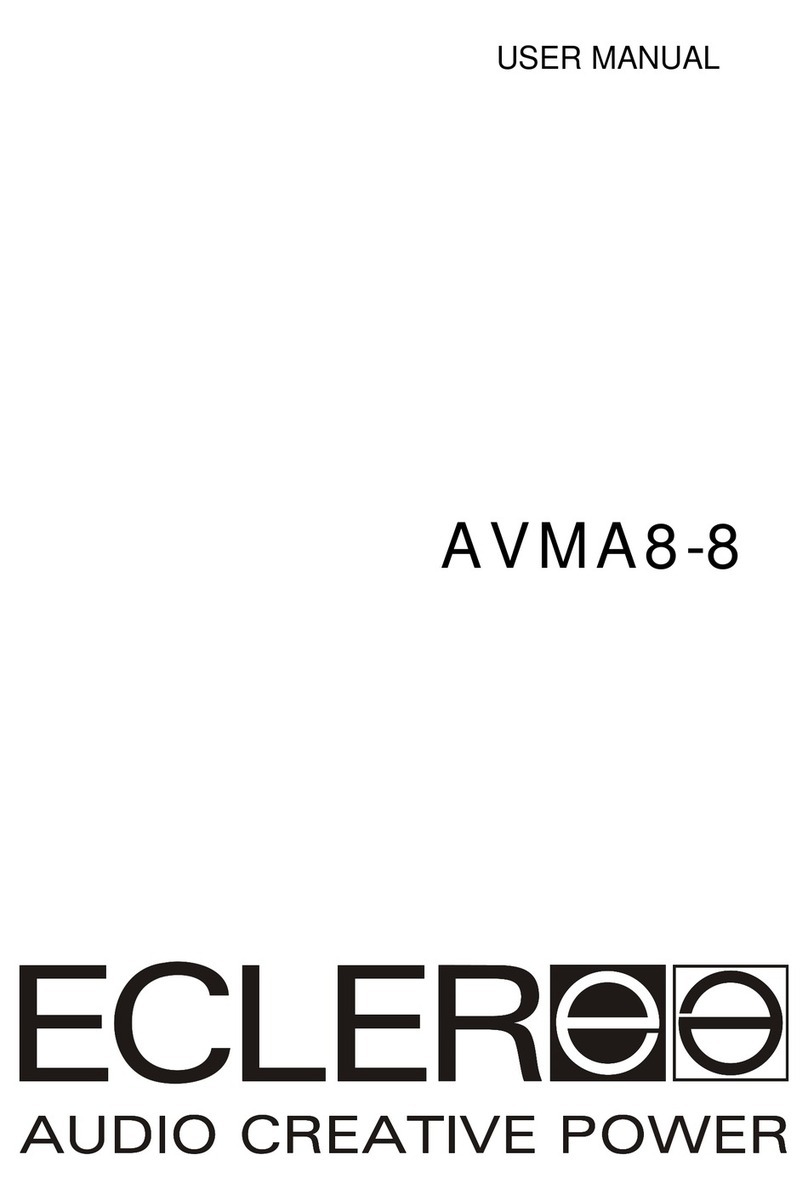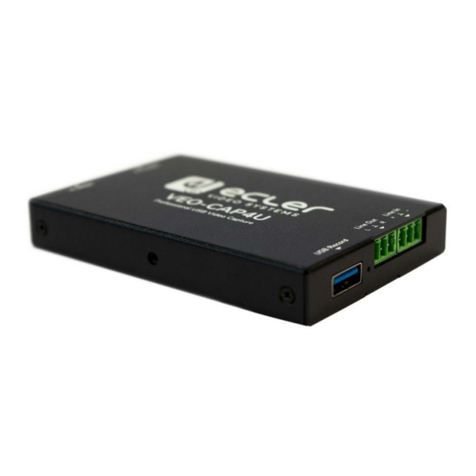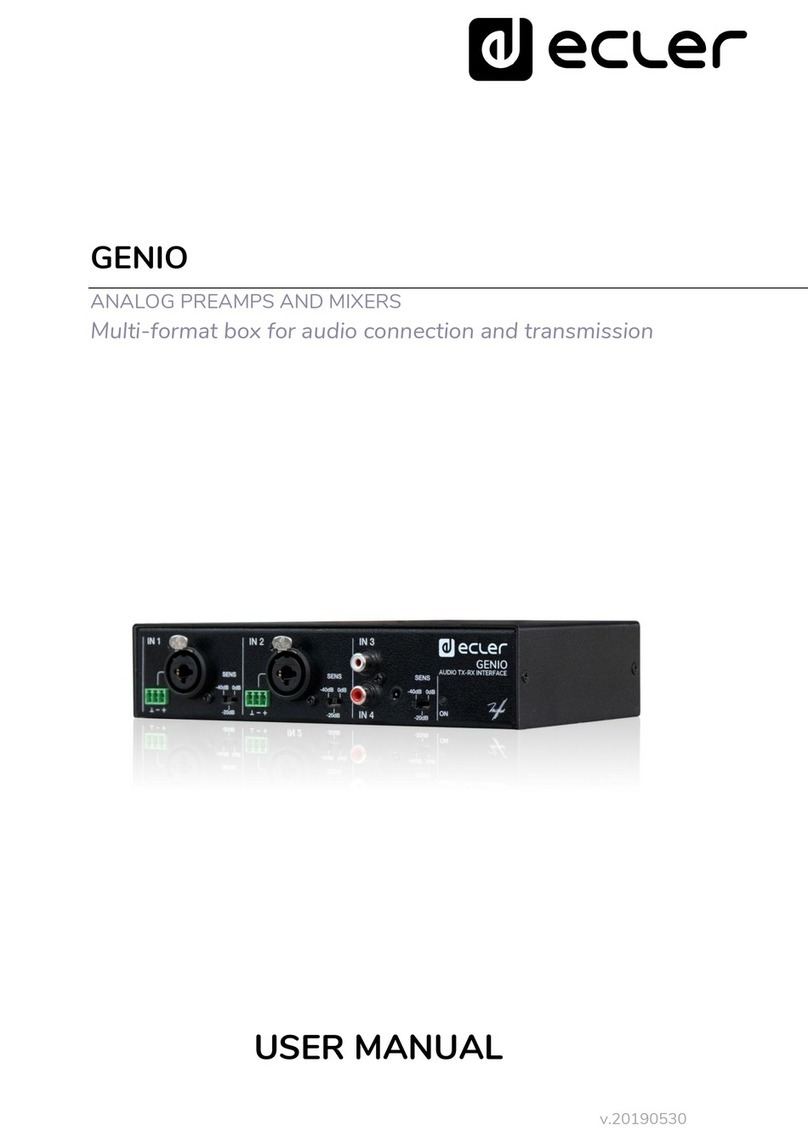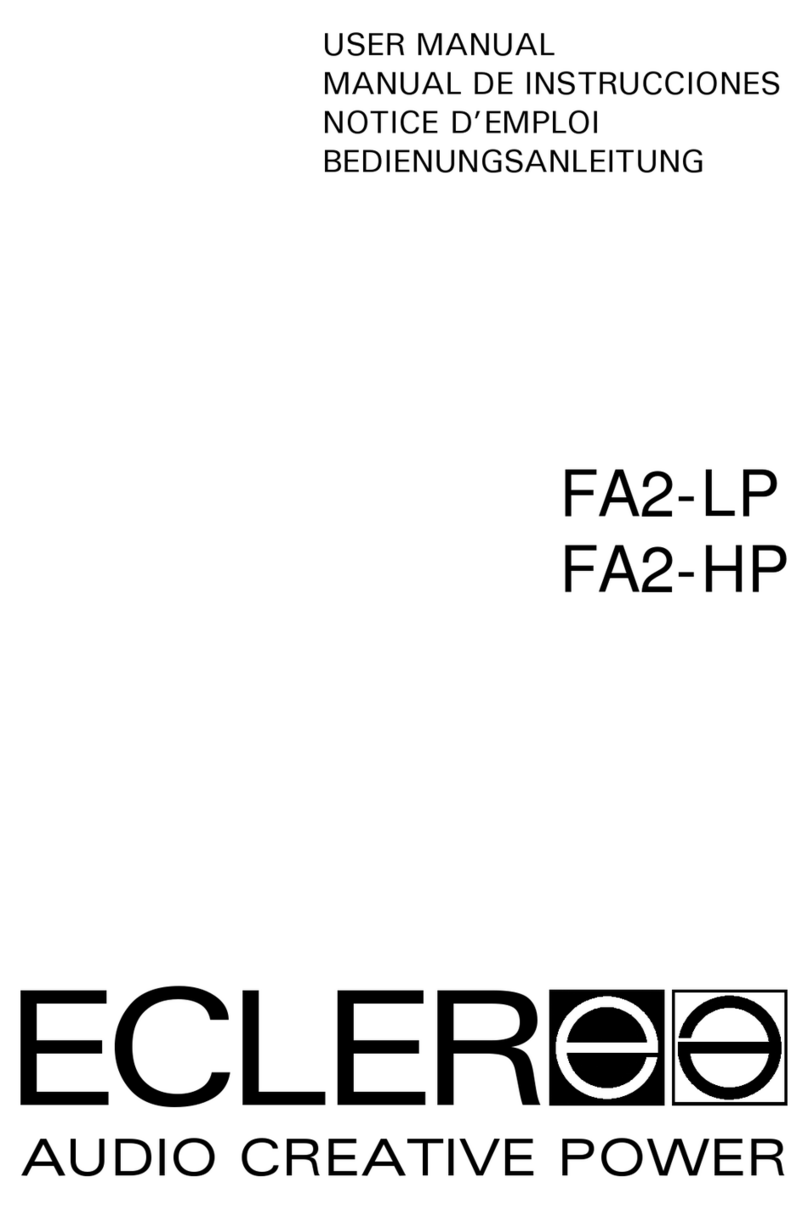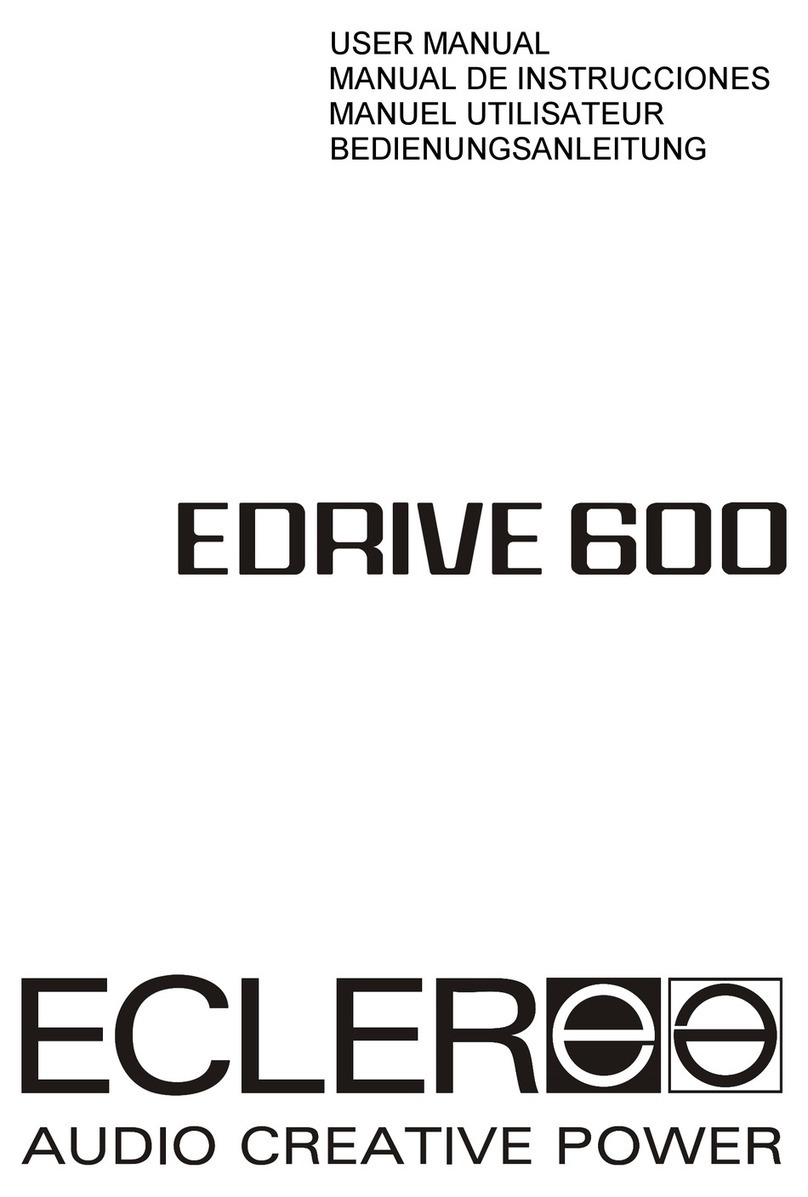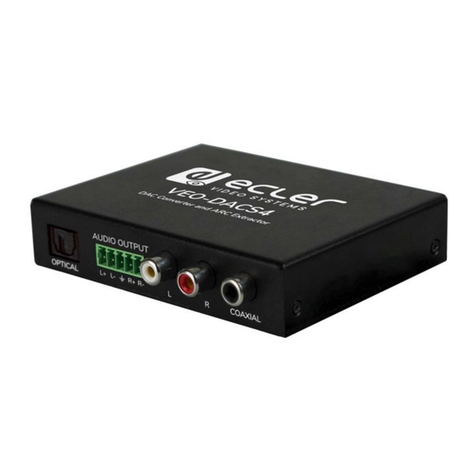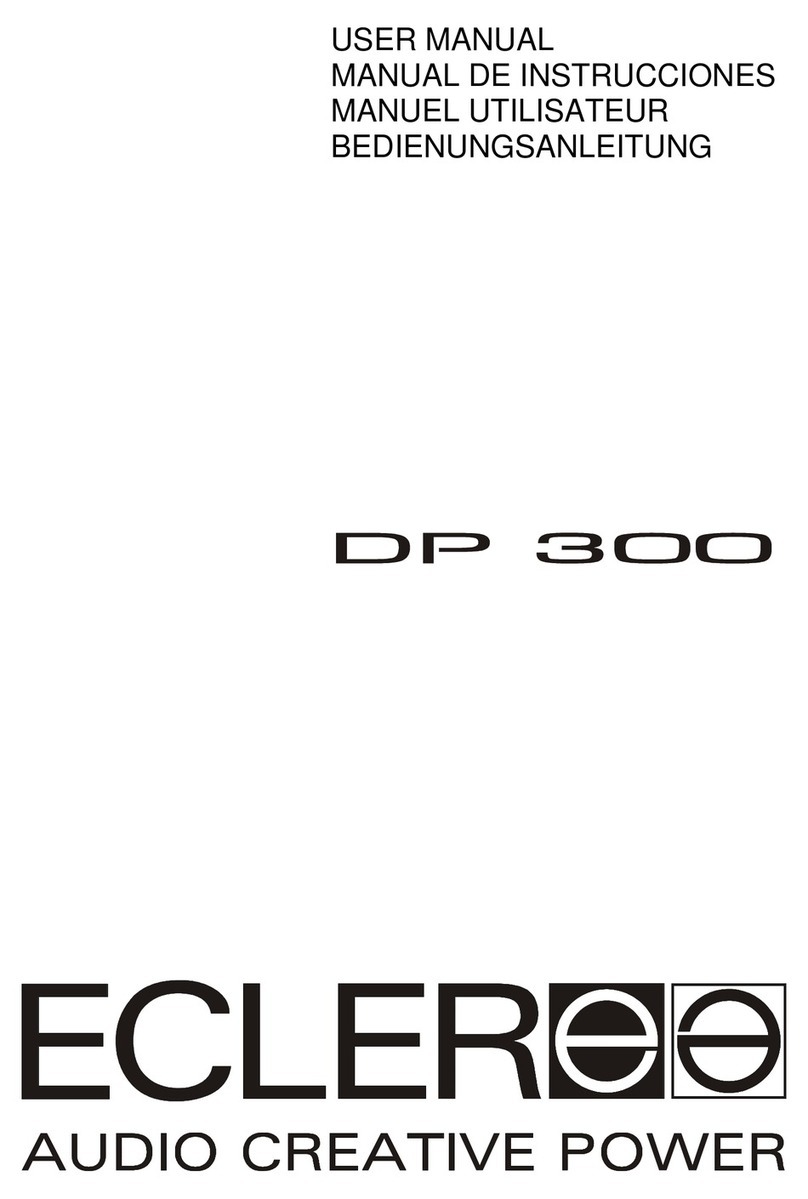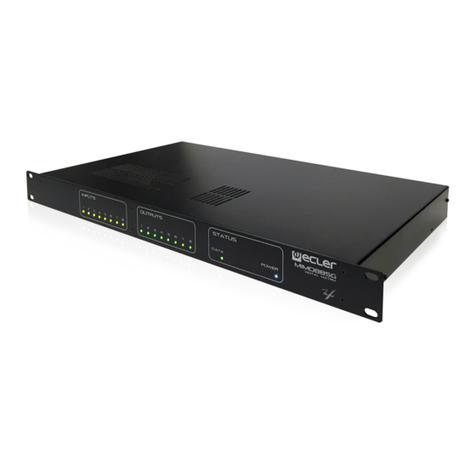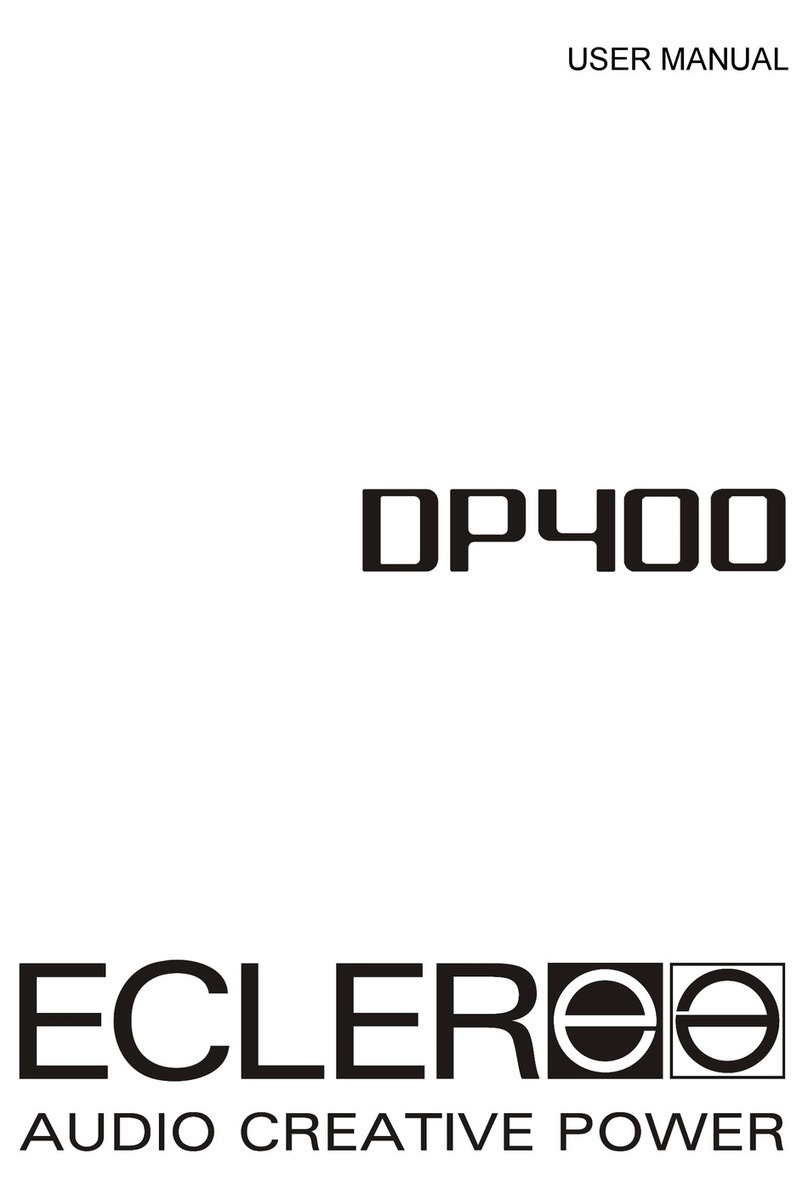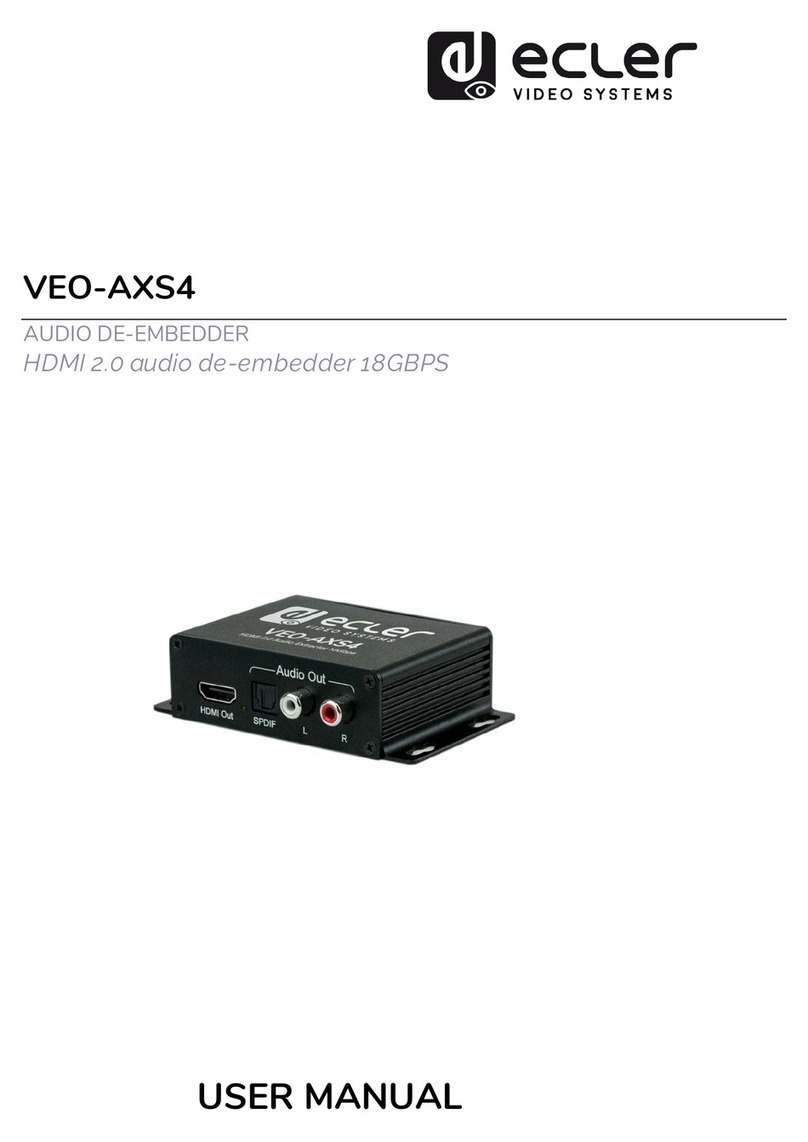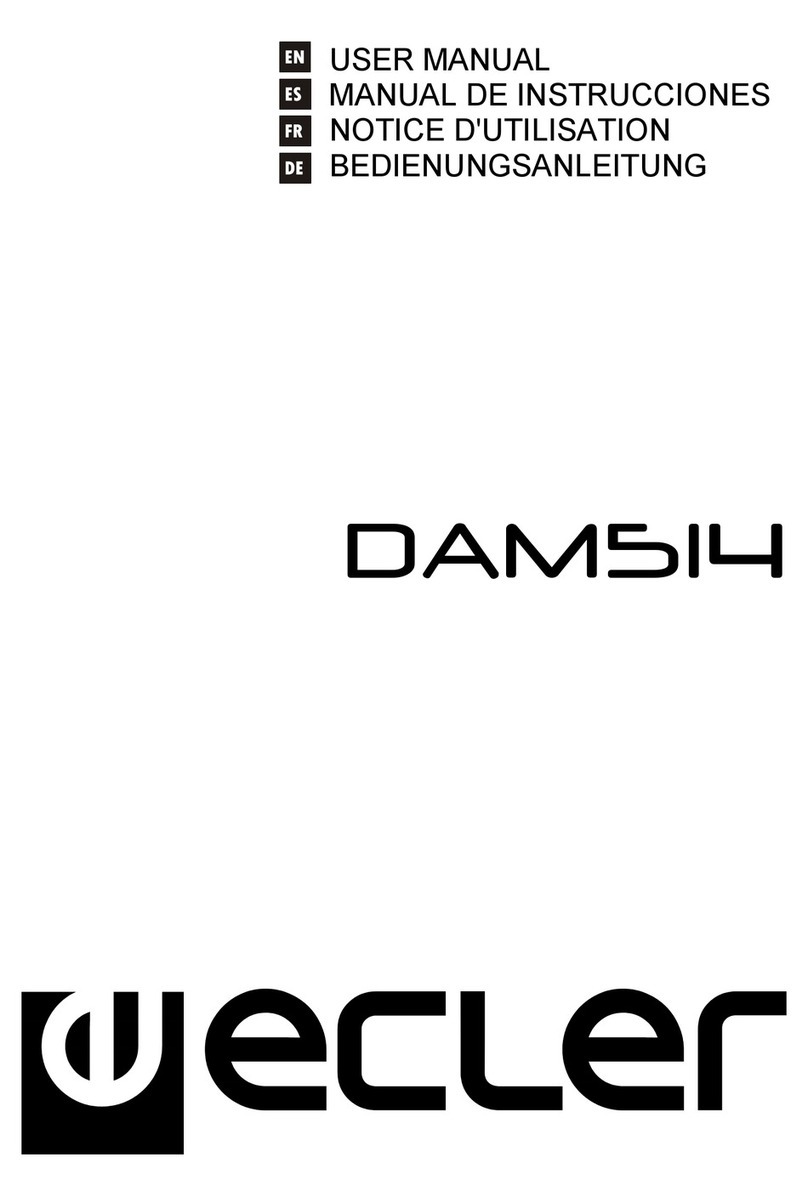10
5.2.5. Channel send to external effect units, FX SEND
All three channels of the NUO3 are equipped with rotary potentiometers (9), which allow you to send the channel
signal to an external effects unit (reverb, sampler, etc.). These pots determine the amount of signal that is sent for
each channel. The SEND output (33) must be connected to the input of the effects processor, and the output of the
latter can be fed back via the RETURN input or a LINE input.
This signal send can be configured either PRE-or POST-fader with the PRE/POST toggle switch (8), so that the
level is affected or not by the channel fader.
5.2.6. Channel Faders
The NUO3 uses a new generation of 60mm ECLER faders (11) featuring an improved precision and very smooth
movement, a very fast cut-in-time, and extra long life performance tested up to 4.000.000 operations when
combined to the ECLER VCA system (VCA=Voltage Controlled Amplifier).
Thanks to the VCA concept, it is possible to modify the gain/attenuation behaviour of faders. The FADER SHAPE
section on the front panel provides two adjustments: the NORMAL/REVERSE switch (14), which inverts the fader
operation (0=open channel, 10=closed channel) and the SOFT/HARD rotary knob (13) which allows fine
adjustment of the fade-in characteristic between these two points, soft fade-in or hard fade-in.
All three channels can be routed to the NUO3 crossfader using the toggle switch (10). “XFA” position routes the
channel to the A side of the crossfader, and “MIX” position means the channel will not be affected by the crossfader
(assigned to the main MIX always).
5.2.7. Crossfader / “eternal” crossfader upgrade
If you want to extend the crossfader operation life, the NUO3 allows an upgrade to the renowned “eternal”
potentiometer.
The ECLER ETERNAL Crossfader is an inductive fade technology based on a magnetic control. An extremely light
aluminium screen (0,5 gr.) cuts the flux lines of a magnetic field created between two sets of coils. This
electromagnetic modulation controls an assigned Voltage Controlled Amplifier that modifies the gain/attenuation of
the signal. The contactless technology is combined with a custom high quality glides mechanism to offer a very
smooth touch and succeed the most accurate Crossfader system! The ETERNAL concept does have obvious
advantages upon other existing systems using optical technology. Unlike optoelectronic elements, the inductive
concept is resistant to smoke, moisture, temperature and aging. The ETERNAL inductive crossfader has been
specifically designed for performing “turntablism” techniques.
The ETERNAL Crossfader also features new “tuning” features grouped in the XFADER SHAPE section that will
give the NUO3 the most accurate Crossfader adjustment:
SWITCH/FADE selector (15): depending of how sharp you want to get your “scratches”, the NUO3 allows you to
set-up the crossfader performance in FADE or SWITCH. The FADE Mode will give the crossfader a progressive
“roll-off” curve meanwhile the SWITCH Mode will “square” the crossfader curve in order to perform almost as a
Switch for fast “scratches”. Additionally, Both curve modes can be finely tuned with the dedicated potentiometer
(18).
NORMAL/REVERSE Switch (16): so-called “Hamster Switch”, which reverses the crossfader normal direction.
Depending on the chosen "fader direction", you can perform “cuts” and “transforms” by moving the Crossfader in
the same direction.
Electronic CUT-IN-TIME correction (17): This feature is only available if the optional “eternal” crossfader is
installed. In case the standard crossfader is used, the CUT IN adjustment should be turned OFF. The “Cut-in-time”
is the distance between the extreme end of the crossfader and the very first “fade-in” point. The shortest position
will give you almost an instant “Cut-in-time”; to find the shortest “Cut-in-time”, the crossfader must be locked on the
very end of the potentiometer in fade-out position (the PGM is fully attenuated) and the CUT-IN-TIME knob must be
turned to the right until (just before) you get the sound. To lengthen the crossfader “Cut-in-time”, turn the knob to
the left.
